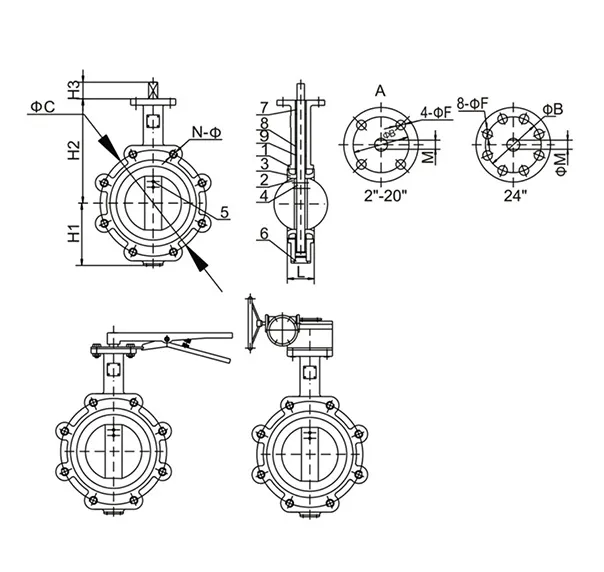8 月 . 29, 2024 20:33 Back to list
Low Pressure Check Valve - Reliable Flow Control Solutions
Understanding Low Pressure Check Valves
Low pressure check valves are crucial components in various fluid systems, designed to prevent backflow while ensuring that the system maintains an efficient flow of liquid or gas. These valves play a significant role in safeguarding equipment and maintaining operational integrity in applications ranging from plumbing and HVAC to industrial processes.
A check valve, by definition, is a one-way valve that allows fluid to flow in one direction and prevents it from returning in the opposite direction. The low pressure variant is specifically engineered to operate effectively under lower pressure conditions, making them ideal for a wide range of applications where high pressure is not a concern. These valves are particularly useful in systems where gravity or low pressure is responsible for fluid movement, such as in drainage systems, wastewater treatment, and certain types of irrigation setups.
The functioning principle of a low pressure check valve is fairly straightforward. The valve consists of a body, a disc or ball, and a spring mechanism. When fluid flows in the desired direction, it pushes the disc or ball away from its seat, allowing fluid passage. However, when the flow reverses, the disc or ball is pushed back against the seat, effectively sealing off the backflow. This simple yet effective mechanism is instrumental in preventing contamination, protecting pumps, and maintaining the overall efficiency of fluid systems.
low pressure check valve

One of the most significant advantages of low pressure check valves is their ability to reduce the risk of system damage
. Backflow can result in considerable operational issues, such as contamination of supply lines, damage to pumps, or even complete system failure. By incorporating low pressure check valves into a system, engineers and designers can mitigate these risks, ensuring smooth operation and prolonged equipment lifespan.Furthermore, low pressure check valves come in various materials, including plastic, brass, and stainless steel, allowing for customization based on the specific requirements of a given application. The choice of material often depends on factors such as the type of fluid being transported, environmental conditions, and the required durability of the valve.
Installation and maintenance of low pressure check valves are generally straightforward. Properly installed, these valves require minimal maintenance; however, routine inspections are recommended to ensure that they are functioning correctly and to prevent any buildup of debris that might impede their operation.
In summary, low pressure check valves are indispensable in many fluid management systems. Their ability to prevent backflow while operating effectively under low pressure makes them a preferred choice in various industries. By understanding their function and significance, designers and engineers can ensure optimal performance and reliability in fluid systems.
Share
-
Understanding the Differences Between Wafer Type Butterfly Valve and Lugged Butterfly ValveNewsOct.25,2024
-
The Efficiency of Wafer Type Butterfly Valve and Lugged Butterfly ValveNewsOct.25,2024
-
The Ultimate Guide to Industrial Swing Check Valve: Performance, Installation, and MaintenanceNewsOct.25,2024
-
Superior Performance with Industrial Swing Check Valve: The Essential Valve for Any SystemNewsOct.25,2024
-
Industrial Swing Check Valve: The Ideal Solution for Flow ControlNewsOct.25,2024
-
You Need to Know About Industrial Swing Check Valve: Functionality, Scope, and PerformanceNewsOct.25,2024